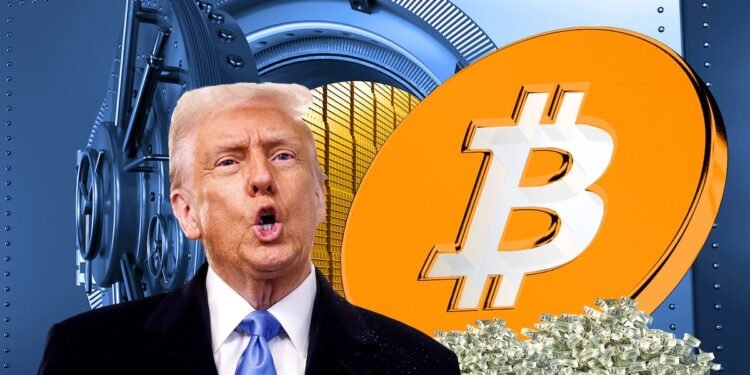Presidential Directive Sets Up Bitcoin Reserve and Digital Asset Stockpile: A Strategic Maneuver for Cryptocurrency Governance
In a notable move in the cryptocurrency sector, President Donald Trump has signed an executive order to form a Bitcoin reserve and a digital asset stockpile. The objective is to harness the potential of cryptocurrencies while ensuring the responsible management of assets previously confiscated by U.S. law enforcement agencies.
Overview of Executive Order
President Trump has unveiled his strategy to create a strategic reserve for Bitcoin and a stockpile for digital assets, initially consisting of seized tokens. While the order doesn’t specify immediate plans for acquiring new tokens, it leaves open the possibility for future Bitcoin acquisitions through different channels. Trump’s directive underscores the responsible utilization of digital assets for national progress, mirroring the oversight of other critical national resources.
The notion of a digital asset stockpile was first introduced by Trump at a Bitcoin conference in Nashville last year. In a subsequent statement on March 2, he revealed intentions to include four additional tokens—Ether, Solana, Cardano, and Ripple’s XRP—in this reserve. This disclosure had previously spurred excitement in the crypto markets as investors speculated about a potential substantial government procurement drive.
Insights from Experts
Experts have analyzed the implications of this directive. David Sacks, the White House Crypto and AI Czar, commented, “The establishment of a digital asset reserve signifies a significant stride towards institutional acceptance of cryptocurrencies.” He added, “The U.S. will retain any Bitcoin deposited into the Reserve; it will be preserved as a value store—akin to a digital Fort Knox for what many refer to as ‘digital gold.’”
There are also concerns regarding the management of the government’s existing crypto assets. Currently holding an estimated $17 billion in Bitcoin and $122 million in Ether, largely from asset seizures, the U.S. faces challenges in tracking these assets, as highlighted in reports from February. The new executive order includes a provision for an audit to ascertain the precise magnitude of the government’s cryptocurrency holdings.
Market Situation and Ramifications
The announcement of the strategic reserves initially thrilled the market, causing price surges for the mentioned cryptocurrencies. However, subsequent declines ensued due to the absence of immediate acquisition plans post the executive order’s issuance. In a span of 24 hours, Bitcoin dipped by 3.7%, trading around $88,100, while Ether saw a 4.4% decrease. XRP, Solana, and Cardano also experienced drops of 1.4%, 3.2%, and 7.9% respectively. These fluctuations underscore the inherent volatility of the cryptocurrency market, especially under government influences.
Expectations of heightened government involvement in cryptocurrency markets now face a reality check, prompting investors to reassess the immediate future of these digital assets. With a focus on responsible governance, the market outlook becomes more complex as investors evaluate the consequences of governmental policies on cryptocurrency valuations.
Conclusion
President Trump’s executive order to establish a Bitcoin reserve and a digital asset stockpile marks a significant stride towards adopting cryptocurrencies at a national level. While signaling a potential shift in the government’s approach to digital assets, the absence of new acquisitions has stirred inquiries and volatility within the crypto market. As the federal government’s management and future strategies for these digital reserves progress, stakeholders will closely monitor the repercussions on market dynamics and the broader acceptance of cryptocurrencies in the financial landscape.








